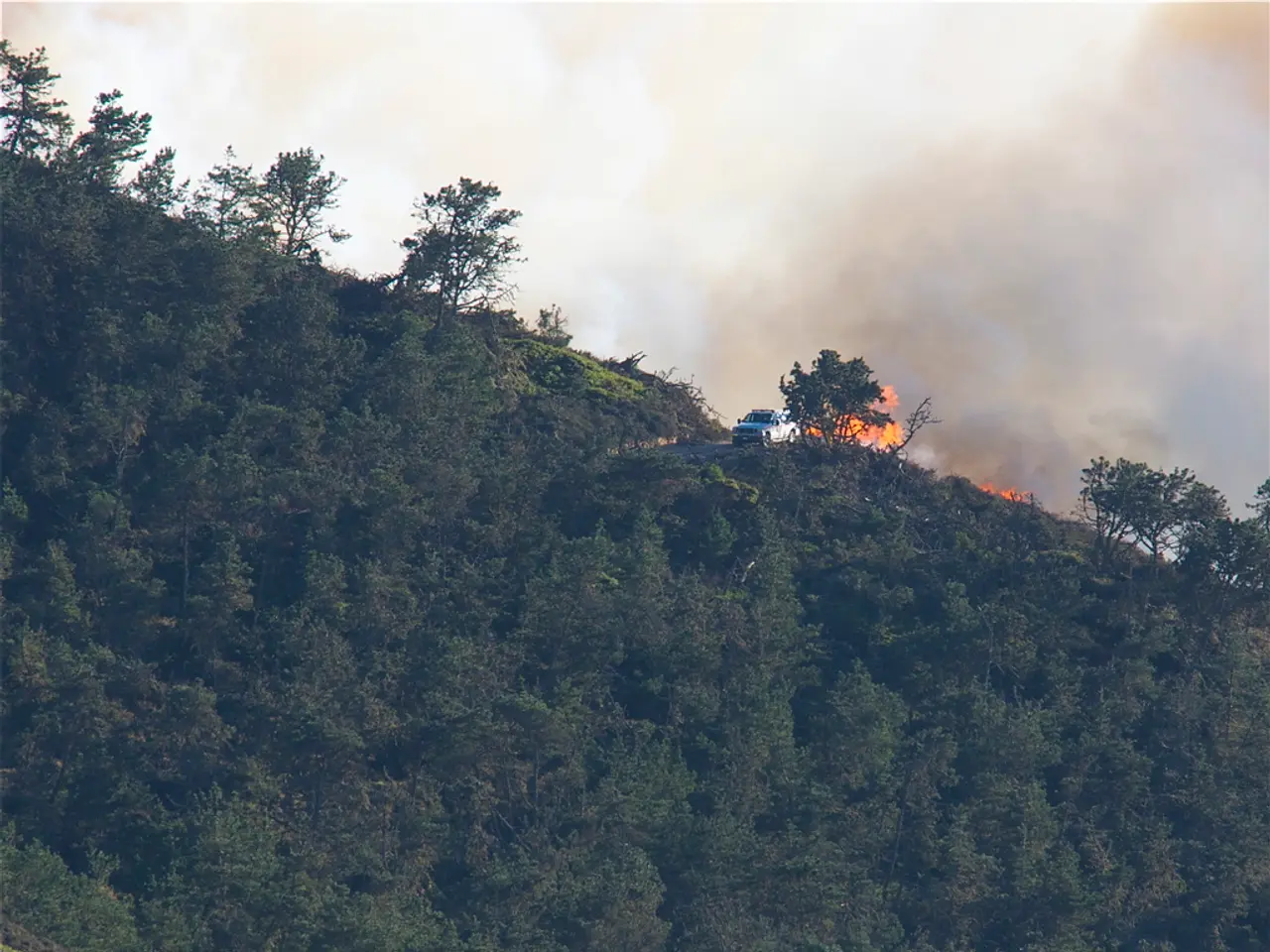Weekend alert issued for potential forest fire in orange regions
Condition Orange Forest Fire Warning Issued: Urgent Precautions for Urban Areas and Public Spaces
During a Condition Orange Forest Fire warning, it's crucial to take specific precautions, particularly in urban areas and public recreation sites. The Department of Agriculture, Food and the Marine has issued this warning, marking the ninth such alert this year.
To reduce the risk of wildfires, vegetation management is key. Homeowners should clear vegetation around homes and structures, creating an Ember Resistant Zone within 5 feet of the home. This zone should be devoid of flammable plants and debris such as dry leaves and pine needles on roofs and gutters. The next 30 feet, known as the Lean, Clean, and Green Zone, should be well-maintained with low flammability vegetation that is regularly watered and trimmed.
Fire-Resistant Landscaping and Barriers are also essential. Using vegetation that is less flammable can help prevent the spread of embers. Green hedges or “green walls” can be planted to intercept embers blown by winds, but they must be well-maintained and strategically placed.
It's important to avoid activities that can spark fires, such as smoking, using open flames, power tools, or refueling engines without allowing them to cool first. Approved containers for fuels should be used, and fire extinguishing tools should always be on-site during outdoor work.
Emergency preparedness is another crucial aspect. Homeowners should be trained to safely shut down equipment and to stop work immediately if smoke or fire is detected. Knowing how and when to evacuate personnel and report fire promptly to emergency services with exact locations is vital.
Urban infrastructure compliance is also essential. Emergency access roads, adequate water supply for fire suppression, and fire protection plans should be in place and conform to local fire codes, especially in wildfire-prone urban interface areas.
Community vigilance and reporting are key to early fire detection. Participating in or supporting community fire watch programs can help, as can remaining alert to early signs of fire and reporting them quickly to authorities, especially during high-risk warnings.
The farming community is also requested to exercise caution with the use of machinery around hay meadows and crop harvesting to avoid any potential fire risks. The department urges landowners and managers to ensure the safety of their property and the public by taking necessary precautions against forest fires.
Visitors to forests, parks, beaches, and other recreation areas are asked not to bring barbeques and other potential fire sources. Open fires, barbeques, and other potential ignition sources should not be used in forest lands and other public areas during the current warm weather phase. These fires can pose significant challenges to firefighting efforts and can divert emergency service resources away from other types of emergencies.
The department warns of the dangers to resources and public safety from vegetation fires. High levels of vigilance are required at this point. The risk of fire outbreaks is especially high for properties with public access, and the warnings specifically highlight the dangers near urban areas and public recreation sites. Smoke from uncontrolled blazes can impact human populations downwind of fire incidents.
Stay safe and follow these guidelines to help protect our forests, parks, and urban areas during this high-risk period.
Science plays a vital role in understanding climate-change effects on weather patterns, which contribute to increased forest fire risks. Environmental-science research can provide insights into forest fire prediction models and sustainable vegetation management strategies to combat climate-change impacts.
Forest fires pose significant threats to public safety, particularly in urban areas and public recreation sites. By adopting fire-resistant landscaping, implementing vegetation management techniques, and practicing emergency preparedness, we can help mitigate the risks associated with climate-change induced weather changes and forest fires.








